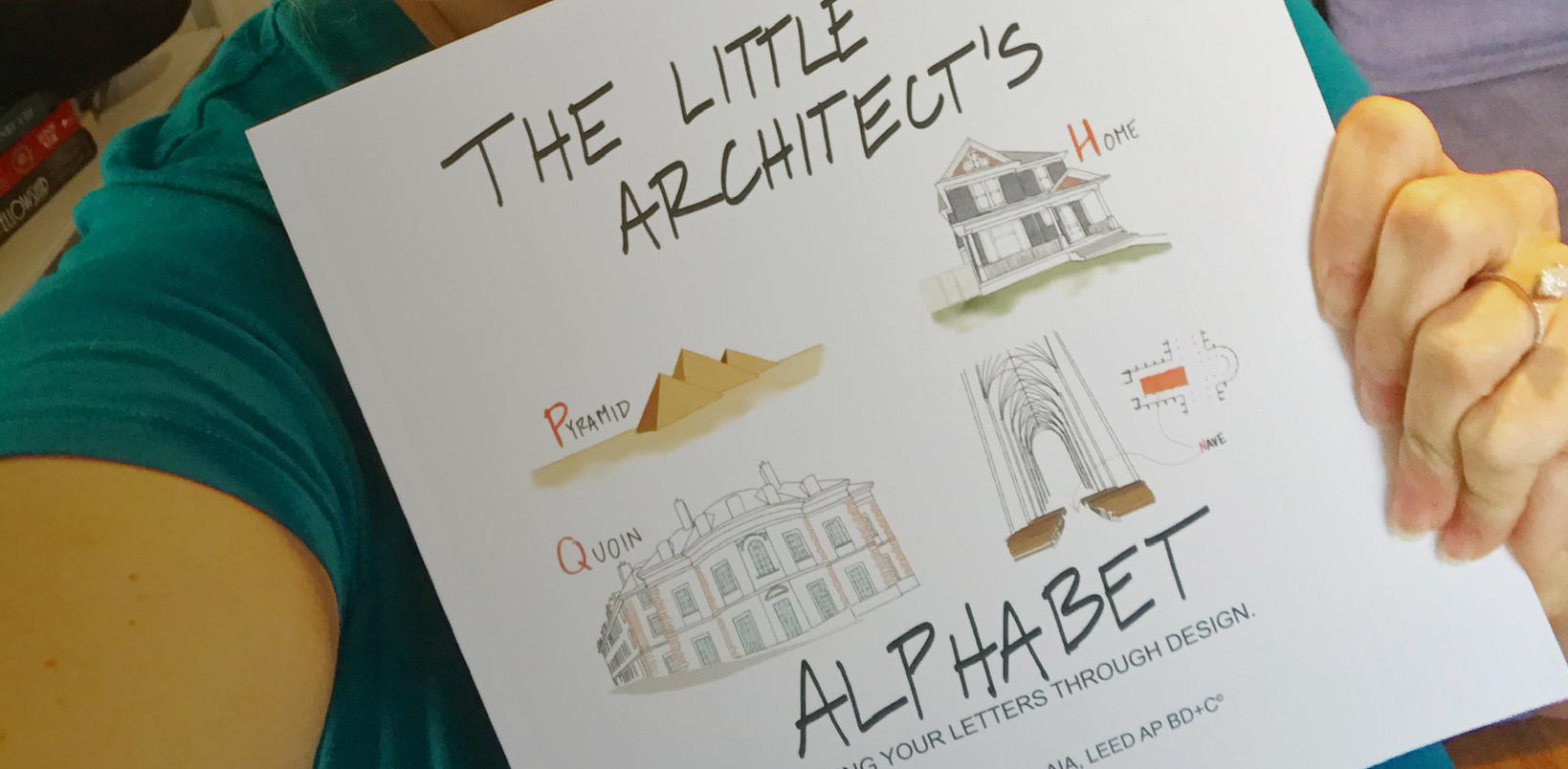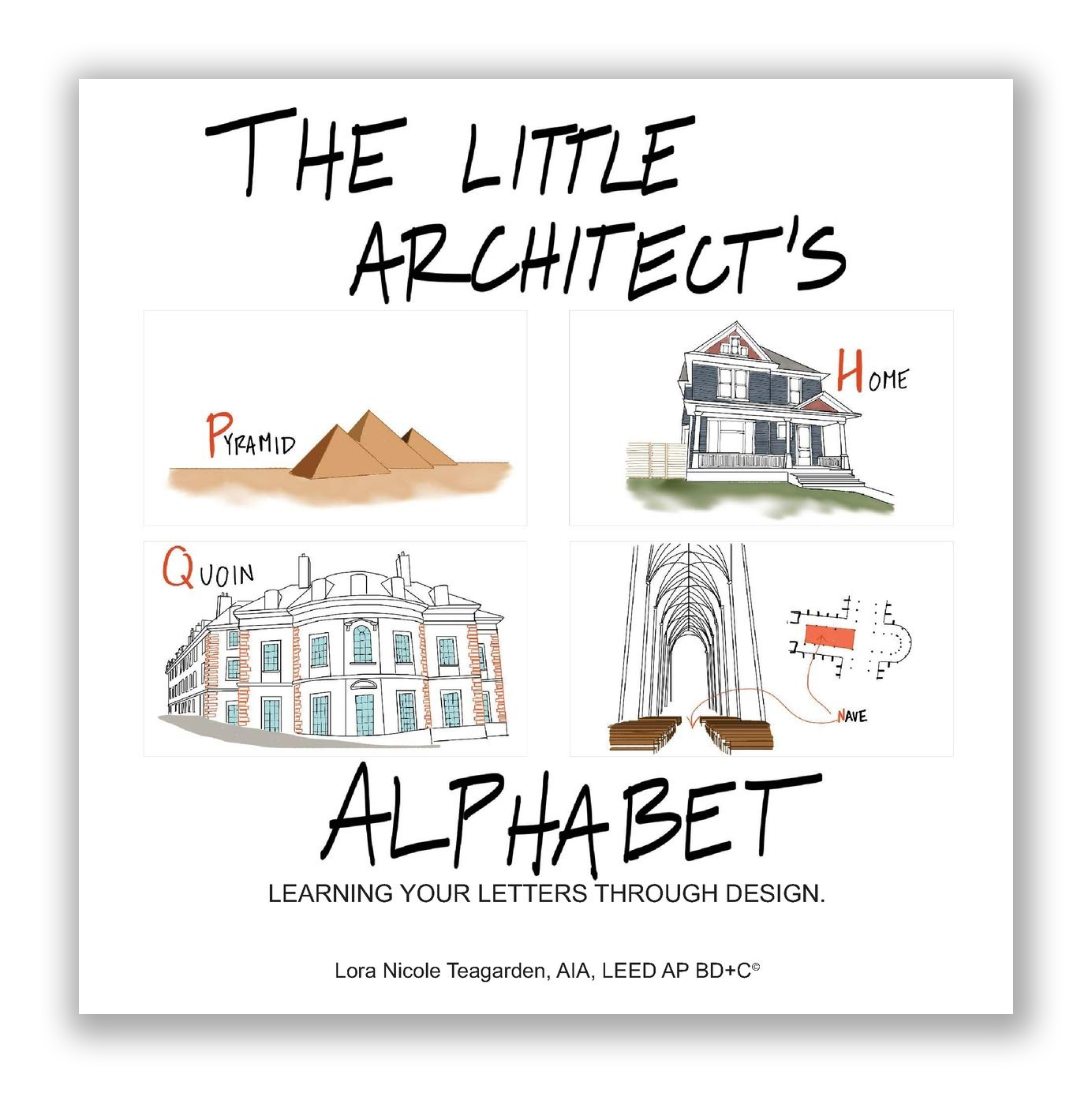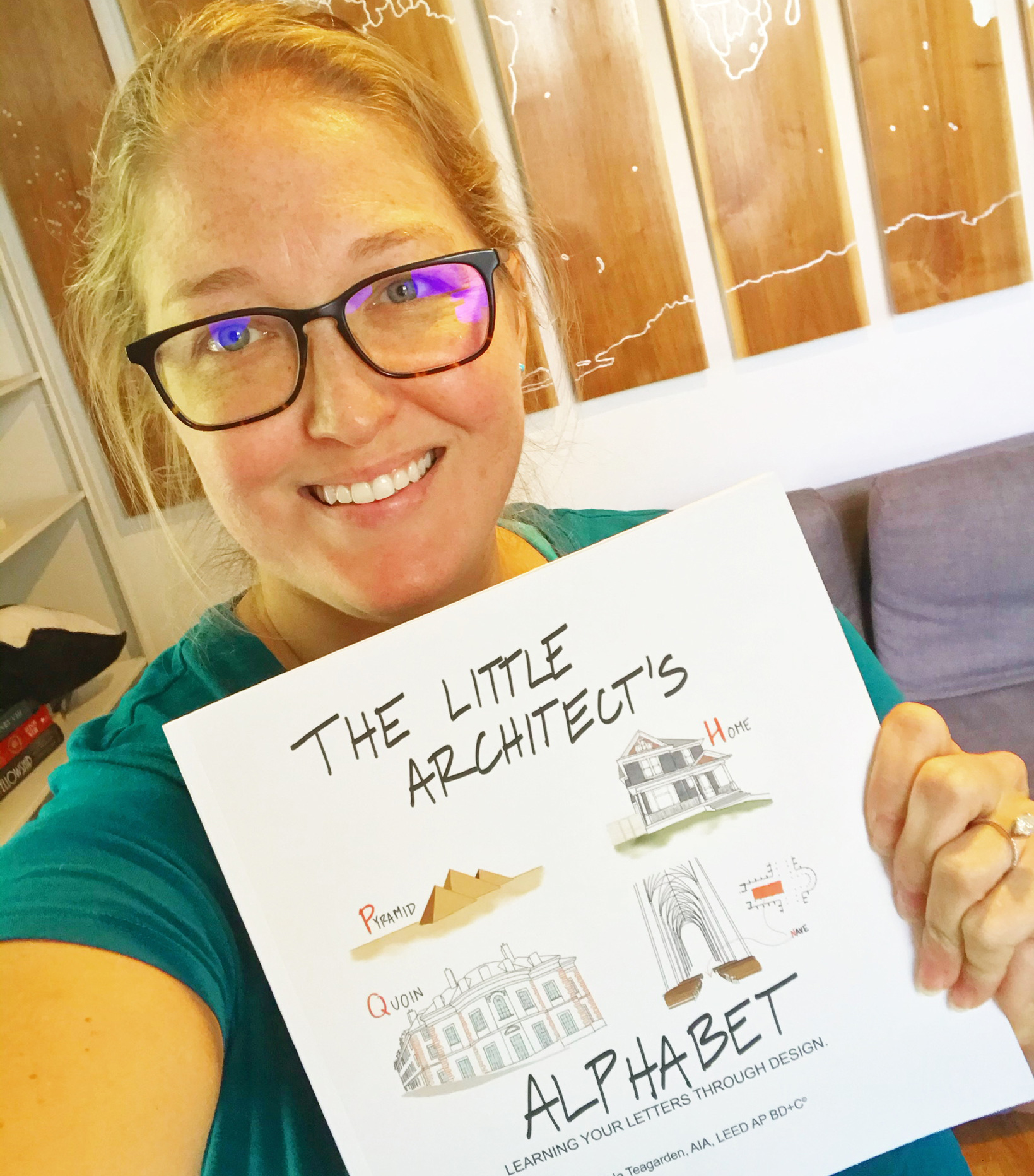Architizer Journal is reader-supported. When you buy through Amazon links on our site, we may earn an affiliate commission. Learn more
While nothing can truly prepare a child for the realities of becoming an architect (see all nighters, crazy clients and endless battle against Starchitect culture), this newly published book provides a gentle and welcoming introduction to the profession.
The Little Architect’s Alphabet book teaches concepts of architecture and design through materials, buildings, and shapes — all while kids learn their ABCs. Each letter is taught through a main lesson page and a secondary page where the child can see, learn, and find more of the letter being learned. With Christmas around the corner, it might be an ideal time to snap up a copy to gift your daughter, son, niece or nephew — who knows, maybe it’ll help them become the next Zaha or Bjarke…
We spoke with the author, architect Lora Teagarden, about the book and her journey in making it — from the initial idea to the final product.
Paul Keskeys: What inspired you to create the Little Architect’s Alphabet book?
Lora Teagarden: I was blessed with a nephew a little over 2 years ago. In the past two years I’ve gotten him all sorts of spatial toys, building toys, and design toys … but I knew I wanted to do something more personal and architecture-specific.
Because of the AREsketches, I already understood the path for book publishing, so I decided to create an alphabet book about architecture words. It ended up being not just an alphabet book, but a picture book, letter book, and “little readers” book all rolled into one. Architecture happens at every age, and this book can grow with them.

In your view, what are the most important aspects or qualities of architecture for children to be introduced to?
Spatial awareness is huge for kiddos. They’re constantly growing and so their scale of their surroundings is changing all the time. They’re also highly visual, so I tried to represent those ideas in the book to the best of my abilities: getting them to think about everything from the early concepts of letters and shapes and colors, to the intricate details (for older readers) of quatrefoils or types of wood joints. In general, I think their understanding as a human in a space, and what that interaction means, is the biggest thing we can teach them. How do we make spaces for everyone?
What were the biggest challenges for you in completing the book?
Time. And X and Z words, haha. Honestly, this book was yet another lesson in priority and time management. With everything going on in the world right now, work with RATIO, AIA initiatives, home renovations, L² blogs and projects, getting engaged in a pandemic, etc… there were so many nights that it would’ve been really easy to just say “I’m tired. I’ll do it tomorrow.” And believe me, there were nights when I said exactly that. But I started the idea of this book when he was born, and now he’s starting to talk and recognize shapes, so watching him grow and learn and explore the world gave me a very clear deadline to get it done.
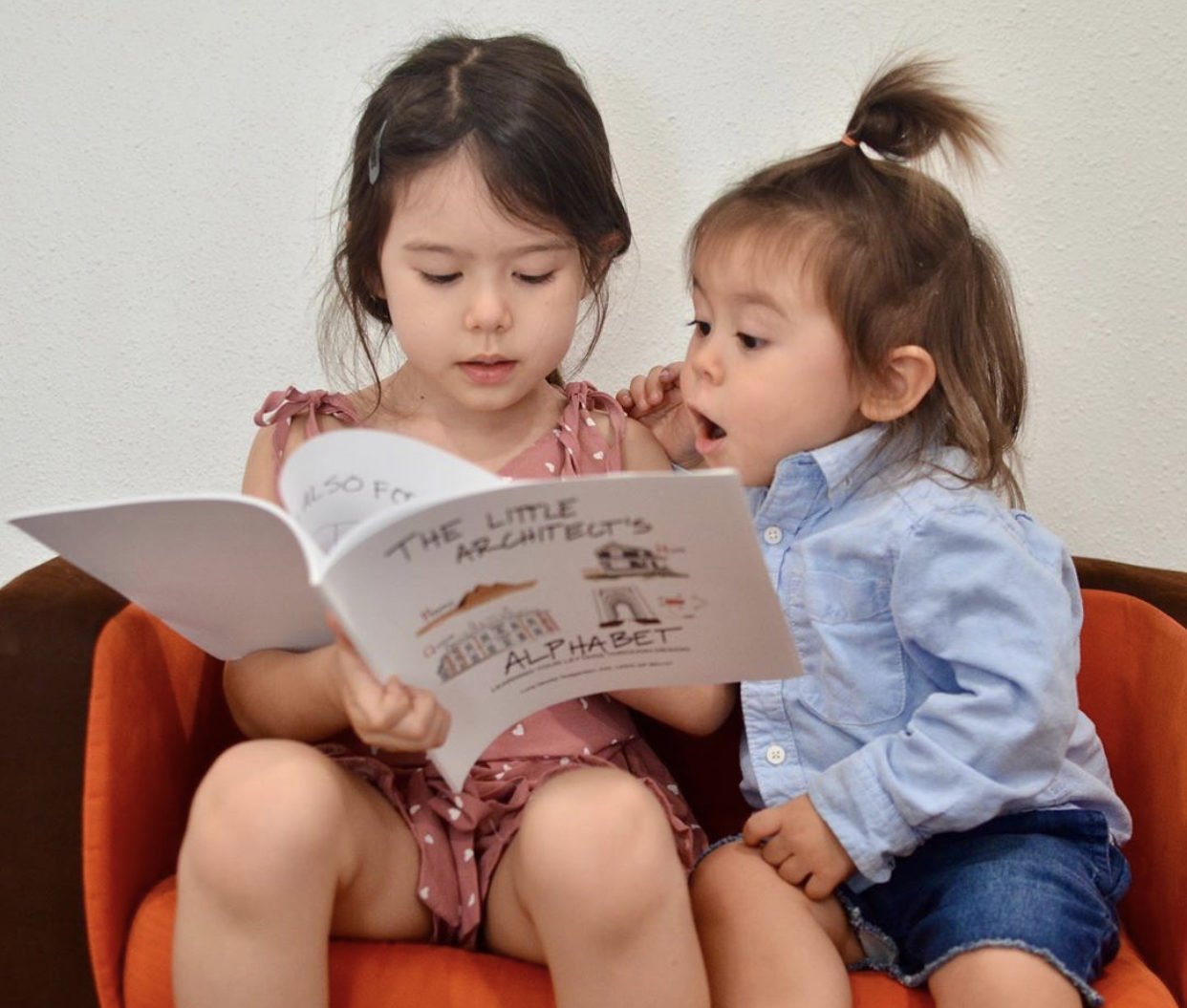
What’s the feedback from readers been like so far?
They love it! Which makes my heart so happy. They’ve been sending pics with their little ones checking out the drawings, or videos of them reading, and it makes me so excited about the future of our profession and the world at large. All these little, diverse brains and hearts thinking about the world around them is so inspiring.
And the feedback from parents has been great, too. Sometimes they’re learning right alongside their littles, or they’re giving me insight into book uses that I hadn’t thought about. Example: simply in the process of trying to find specific letter words, or in describing what a thing is, some of the words are harder. Which allows this book not only to be an alphabet book, but a book that grows with the kids as they continue to learn to read.
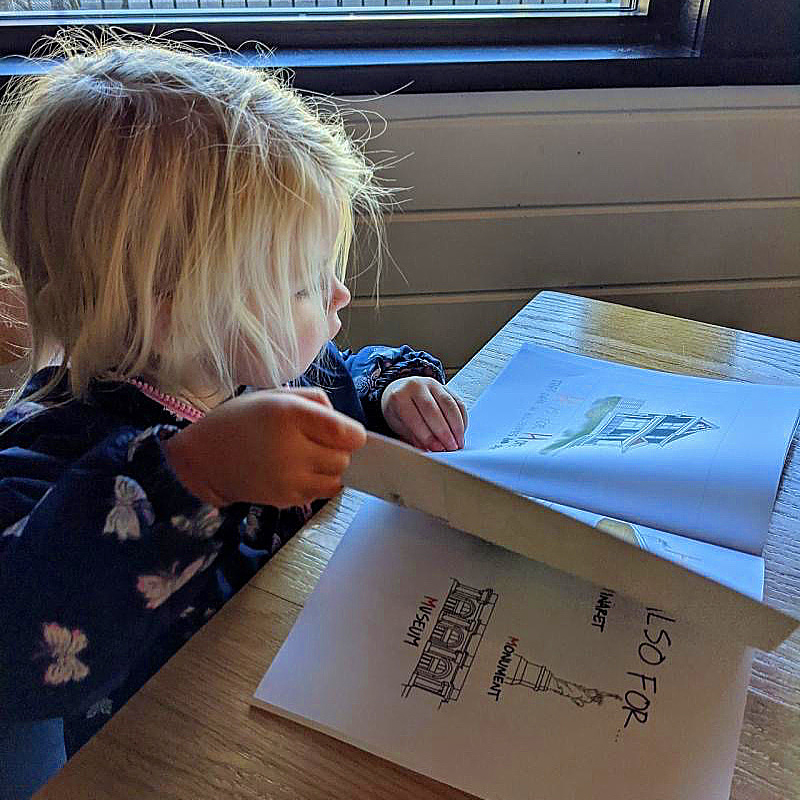
Which is your favorite letter page in the book?
I think the D is for Doors is a fun one to think about all the door types and get them starting to think about the way they interact with openings. But I also really love the “seek and find” scenario that I built into “T is for Transportation” page!
Do you have any more book ideas in the works?
I’m still working on the next version of the AREsketches, so that’s definitely on the docket for future publishing. Specific to children’s books, I’m not sure. I might have just set myself up with a hard (but worthwhile) bar to uphold by making a book specifically because of my first nephew. What happens if there’s more?!?! Haha. But I’m passionate about architecture and the future of our profession, so if that means having to think of more children’s books to write as time goes on, that’s a positive problem. The more minds we can get interested in the world around them at a younger age, the better.
To grab a copy of the Little Architect’s Alphabet book, head this way.
All image courtesy Lora Teagarden.
